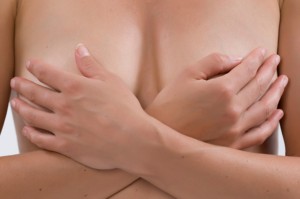 Breast Reconstruction is the term given to correcting breast deformities, and most commonly is the term used to describe the making of a new breast after one is removed for cancer (mastectomy). It also applies to fixing dents or deficiencies in breasts after lump removal or trauma.
Breast Reconstruction is the term given to correcting breast deformities, and most commonly is the term used to describe the making of a new breast after one is removed for cancer (mastectomy). It also applies to fixing dents or deficiencies in breasts after lump removal or trauma.
Breast reconstruction can be undertaken at the time of your mastectomy (immediate), or at a later date (delayed).
Hamish is proficient at all forms of breast reconstruction. There are many options available, and you will be guided to help you choose a solution that fits both your needs and your figure.
As with all invasive and surgical procedures you should be aware of the risks and understand the possible complications that can occur. It is extremely important to ensure you have the right information and choose the right surgeon before proceeding with your surgery.
Commonly considered options include:
Tissue Expanders
This usually involves placing a bag (called a ’tissue expander’) under the chest wall muscle (the ‘pec’ muscle) and, once you have healed the skin, progressively inflating this bag over a few weeks. This is done by putting a needle into a valve in the tissue expander and injecting saline. The whole thing acts to stretch the skin of the chest in the same way a pregnancy stretches the abdomen, Once you have stretched enough, the expander can be removed and a permanent teardrop implant is placed, involving an overnight stay in hospital, but often very little recovery time.
Latissimus Dorsi (back) Flap
The Latissimus Dorsi is a big muscle on your back. This procedure involves taking skin, fat and muscle from your back to make a breast. This can be combined with an implant if you need more volume than the back can provide. This leaves you with a scar on your back, but little impact on your return to full activity, and is a good way to provide smaller volume reconstructions or adding in skin to a breast where the previous surgery or radiotherapy has left things tight on the chest.
Abdominal Flaps
This involves a flap of tissue taken from the abdomen, and uses the lower tummy skin, fat and muscle to make a breast. The operation thus has the same abdominal result as a “tummy tuck”. There are several forms of this flap, all moving the same fat and skin, but using different ways to get the blood supply to this tissue to be connected once the tissue is on the chest.
Different forms of this flap include the following:
- Pedicle TRAM – Taking a strip of muscle from the washboard muscle that runs up and down the abdomen to carry the blood supply to the fat and skin of the lower tummy roll which is used to make the new breast.
- Free TRAM – Muscle ‘sparing’. This requires microsurgery to reattach blood vessels to the flap on the chest to bring blood supply to the moved tissue, but takes less muscle from the abdominal wall.
- DIEP Flap – This again uses the tummy skin and fat, but no muscle is taken, and again microsurgery is used. This is Hamish’s preferred method of using the tummy to form a breast, and has the least impact on the abdomen muscle so should give a quicker and easier recovery. This is a long and complex operation, but often has surprisingly little pain associated with it.
Gluteal Flaps
Using your own tissue from the Buttock; the Gluteal flaps (inferior and superior) are an option for breast reconstruction where the body shape is less suited for one of the other options. These leave a scar on the buttock and require microsurgery, and have a limited volume in most people.


